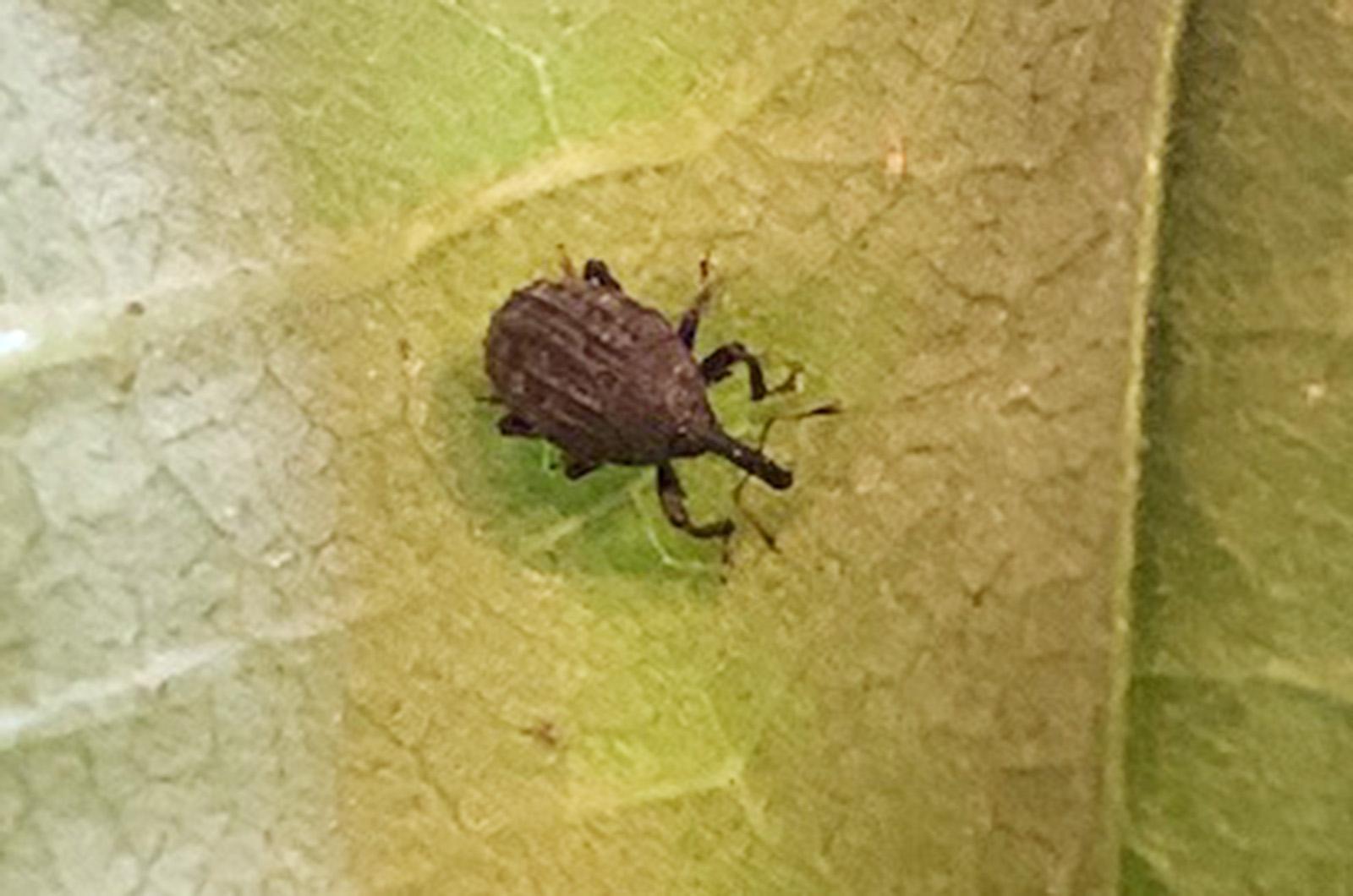There was no reason to be ticked off by the black creature crawling among my foraged food. At first glance, it appeared to be a tick. Round body, check. Lots of legs, check. Black color, check. It also appeared shriveled up, like a dead tick after its blood meal. That was just a pretext.
A closer look showed that one should not jump to conclusions when it comes to skulking species. In fact, this bulbous beast had six legs and a pair of antennae that might resemble legs if you didn’t look closely. It also had wings, or elytra, that were deeply grooved and allowed for flight, a trick ticks cannot achieve. Adult ticks walk with their eight legs but don’t fly. They have smooth backs and lack wings and antennae. Ticks definitely don’t have a snout, which was clearly present on my mystery model.
The insect on my counter was not a human predator but a vegetarian varietal with no blood needs, only plant preferences. Its crumpled body was just a trick of playing dead to avoid predators, which was clear as it quickly opened up and tried to get away from my prying eyes.
Yellow poplar weevils are not nearly as plentiful as ticks, though they are often confused for them. Massachusetts is at the northern portion of this weevil’s range at this time, even if that is likely being altered by climate change. With aliases including sassafras mining weevil, magnolia leaf miner and tulip leaf miner, it is easy to determine this insect’s favored trees. I found my specimen among milkweed shoots, which are not this petite pest’s preferred foodstuff.
The weevil’s lifecycle explains its presence on the tips of my supper treat. These weevils overwinter in leaf litter after spending their lifecycle amongst their favorite hosts. Eggs are laid on the aforementioned preferred host trees. They will hatch and larvae (white legless grubs), living and feeding on the plant’s leaf midrib, with each holding up to nineteen little larvae.
These larvae will eat the leaf. If there are enough weevils, this will cause the leaves to brown. As the weevils grow to adulthood, they can leave kidney-shaped holes in the leaves, Swiss-cheesing the affected plants. Generally, most trees are strong enough to avoid long-term damage, but occasional outbreaks of the weevils happen and can cause issues for weakened trees.
Larvae will cocoon themselves and metamorphose into adults that drop to the ground to diapause before they start the cycle anew in the spring, when they will re-emerge and begin eating developing plant buds. Weevils wobble and do fall down.
Thomas Say, colloquially known as the father of American entomology, is credited with first identifying and naming this weevil. He called it Odontopus calceatus and one wonders why, since odont means teeth, pus is liquid or water and calceatus is shoes.
A wet, toothed shoe doesn’t make much sense. Blame it on my poor Latin translations. Perhaps Thomas ran out of names, (Say it ain’t so) considering he named more than 1,000 beetles, 400 insects, plus mammal, birds and shells. History and science haven’t been kind to Say, because scientists no longer accept many of the names he bestowed. However, that is typical as taxonomy evolves and others rename species they claim to have discovered.
No matter what you call it, don’t be tricked into thinking this weevil is a tick: it’s a lot more poplar than those disease-carrying denizens.
Suzan Bellincampi is director of the Felix Neck Wildlife Sanctuary in Edgartown, and author of Martha’s Vineyard: A Field Guide to Island Nature and The Nature of Martha’s Vineyard.




Comments
Comment policy »